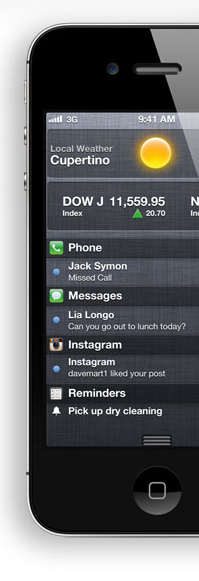 When the first iPhone came out in June, 2007, I was in lust. I wanted one, but I just didn’t need one.
When the first iPhone came out in June, 2007, I was in lust. I wanted one, but I just didn’t need one.
But I understood – even way back then – that this was a seismic event, an introduction that changed everything:
Do I think this changes everything about cellphones, as has been the general buzz?
Yep.
The one striking thing I note when I read reviews about this product is that the reviews are not about a cellphone, the reviews are about a mobile device that does A, B & C – oh, and you can use it as a phone, as well.
I do think this is a watershed moment in cell phones and all mobile devices; I’ll be interested to see what Apple does next (3G, for example) with this device.
And that’s the key – it’s not a cellphone.
It’s a device. A handheld computer.
— iYawn
I was thinking about my thoughts from that distant day when I recently ran across an excellent John Gruber article over at daringfireball.net. As part of a review of another article, he lays out his vision of the iPhone:
The iPhone is not and never was a phone. It is a pocket-sized computer that obviates the phone. The iPhone is to cell phones what the Mac was to typewriters.
[…]
The iPod’s success fooled almost everyone (including me) into thinking that Apple’s entry into the phone market would be similar. The iPod was the world’s best portable media player; the “iPhone”, thus, would likely be the world’s best cell phone.
But that’s not what it was. It was the world’s best portable computer. Best not in the sense of being the most powerful, or the fastest, or the most-efficient to use. The thing couldn’t even do copy-and-paste. It was the best because it was always there, always on, always just a button-push away. The disruption was not that we now finally had a nice phone; it was that, for better or for worse, we would now never again be without a computer or the Internet.
Well put.
And Gruber goes on to link to a story from back in the day saying how RIM was screwed, because the mobile market was moving to mobile computers, not phones or messaging devices. And look where Apple and RIM are today. Apple’s on top of the world; RIM’s in the crapper.
It really is stunning how fast this market has changed – smart phones today are not just devices with a phone, but they are cameras, instant messaging platforms, ereaders, gaming consoles, have Photoshop-like apps (Instagram, Camera Awesome) and thousands of other apps so you can make the device whatever it is you want. Even in the heady days following the iPhone launch, I don’t think many would have thought we’d be where we are today in just five short years. It’s mind-blowing.
What’ll the next five years bring? Well, faster connectivity, hopefully better battery life (thank god for Mophie cases!), probably thinner cases and better cameras…
But what’s the feature out there that is not just an improvement, but a radical departure – as the iPhone was from the other hot phones of the time, Motorola’s Razr and RIM’s Blackberry? Will the form factor change? I loved my flip phone, and I really don’t want a bigger phone (bigger screen is nice, but bigger form factor: no). What if very thin smart phones were flip phones? Or slide outs? So the carry-around form factor is half of what it is today, but opens to your typical smart phone form factor? That’d be interesting.
What else could be coming down the pike? I’ll bet that at least one of the disruptive ideas that comes along will seem obvious once it’s adopted. Like touch screens for phones.
It’s been a fun ride, and it’s not over yet…
Photo © Apple.com; cropped
